John Hurrell – 22 July, 2020
The colourful masks collaboratively made by the two artists are displayed in a separate room from the photographs that they respond to, and incorporate all sorts of surprising symbolically meaningful (based on personal memories) materials such as a nikau palm frond (found by one of the children in a park in Grey Lynn), plastic medical mask (worn by both an artist's niece and mother having chemotherapy), coathanger wire, recycled tapa cloth, and a repurposed dancer shaker.
Pakuranga
(UN)Registered Savages of Aotearoa (Daren Kamali & Ole Maiava)
Mata Makawa - Mata Vou
Curated by the artists and Gabriela Salgado
23 May - 16 August 2020
Daren Kamali (see video) and Ole Maiava are two iTaukei (indigenous Fijian) multi-media artists who here present photographs, sculpture and poetry under the collective moniker of (UN)Registered Savages of Aotearoa—an exciting event because contemporary Fijian culture presently has a low profile in this country.
Their title, Mata Makawa - Mata Vou, means ‘Old Face - New Face.’ Most of the exhibition consists of documentary images of wigs of human hair (ulu cavu) found in British collections—mainly the Museum of Archaeology and Anthropology in Cambridge—and masks the artists themselves have made. The existence of the former (a centuries old tradition in which hair is seen as sacred, and when removed from the head, usually buried) will be a surprise for most visitors.
The masks by the (UN)Registered Savages of Aotearoa are a response to the photographs (taken by Maiava) of the ulu cavu in the Cambridge collection (imagining the masks beneath the wigs), and the poems in the accompanying extremely informative publication are a response to the masks.
The photographs of wiry cut hair lying flat (sometimes otherwise enclosed in hibiscus netting baskets), and often woven or plaited and lined with coconut fibre, are unusual documents. In the installation Daren Kamali‘s own dreadlocked hair is presented in a vitrine with related objects.
Cut hair is an unsettling subject for most of us, especially other people’s. It is usually thought of as dirty and quickly thrown out with the rubbish, or burnt. In some societies it is linked to contagious magic and regarded as if the spirit of its disconnected owner were still inhabiting it and vulnerable to sorcery. In our mass media-fixated culture, depictions of women’s hair have often had erotic fetishistic properties that make them seem alive in their own right, attracting desire even though they were separate from their ‘growers’.
Mata Makawa - Mata Vou refers to a pre-missionary tradition when ulu cavu were worn initially in times of warfare (provocatively made from the hair of slain enemies), mourning (here called ulumate) or religious ceremony (atoning the gods), and in postcolonial times by chosen men (Qita) who guarded the Brazilian plum and duruka (edible reed) plantations. Part of a Qita’s costume (with the ulu cavu) was a white bark cloth (masi), leaves and a mask. It was forbidden to talk to them when they were so attired, and over time (because hair was ‘harvested’ to make ulu cavu), they grew their hair back under the wigs.
The colourful masks collaboratively made by the two artists are displayed in a separate room from the photographs that they respond to, and incorporate all sorts of surprising symbolically meaningful (based on personal memories) materials such as a nikau palm frond (found by one of the children in a park in Grey Lynn), plastic medical mask (worn by both an artist’s niece and mother having chemotherapy), coathanger wire, recycled tapa cloth, and a repurposed dancer shaker.
These deeply personal, garish, lopsided and wonky masks are really private contemporary sculptures that are often hard physically to wear, wall mementoes of a tribal heritage, lumpy awkward ciphers that stretch the limits of wearable functionality. They are homemade ‘museum objects’ (not elegant or ‘pleasingly’ museological), improvised assemblages that cluster together familial references; improvised ‘shells’ for conveying collective meanings about histories, community and places of origin.
An engrossing interview with Daren Kamali can be heard on the excellent radio programme Artbank 95bFM. (47 mins into the two hour slot.)
John Hurrell
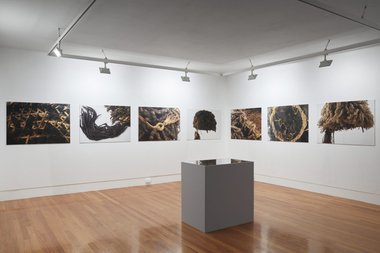
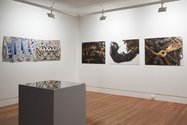
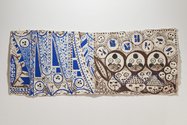
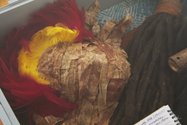
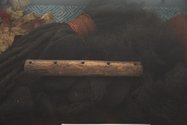
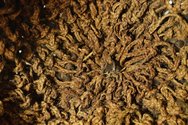

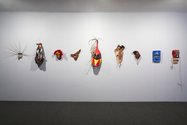

 Advertising in this column
Advertising in this column Two Rooms presents a program of residencies and projects
Two Rooms presents a program of residencies and projects



This Discussion has 0 comments.
Comment
Participate
Register to Participate.
Sign in
Sign in to an existing account.